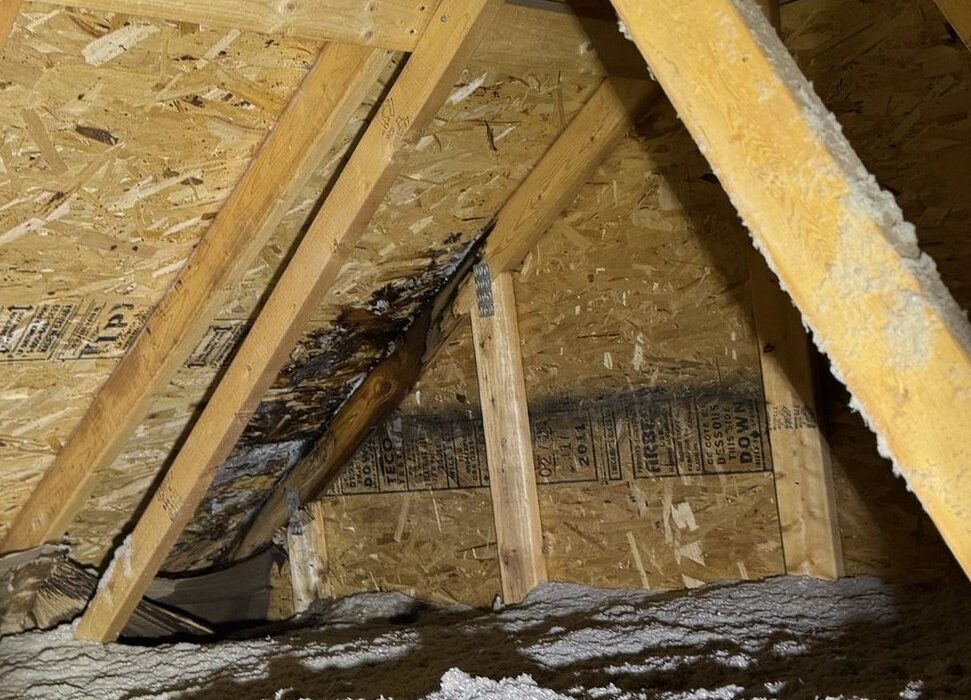Storms can be relentless, and your roof takes the brunt of it. High winds, heavy rain, hail, and snow can cause serious damage, some of which isn’t immediately obvious. You might notice missing shingles or a leak in the ceiling, but sometimes, the biggest issues are hidden. Knowing what to do when your roof is damaged can save you time, money, and stress. Acting quickly is key to preventing more extensive issues down the road.
Understanding Roof Damage After a Storm
Not all storm damage looks the same. Strong winds can tear off shingles or loosen flashing around chimneys and vents. Hail can dent metal roofing, crack tiles, or create soft spots in asphalt shingles that might not show signs of failure until months later. Heavy rain can exploit any small weakness in your roof, leading to leaks that slowly damage insulation, ceilings, and walls. Snow and ice bring their own problems. Ice dams—those thick ridges of ice that form at the edge of your roof—can block proper drainage, forcing water back under your shingles. Over time, this can rot your roof decking and lead to costly repairs. In extreme cases, heavy snow accumulation can cause structural sagging.
Then there’s impact damage, which happens when a storm sends tree branches or debris crashing onto your roof. Even a small branch can dislodge shingles, while larger debris can puncture the roof entirely. And while rare, lightning strikes can cause severe damage, sometimes even leading to fires.
What to Do If Your Roof Has Storm Damage
After the storm has passed, take a few moments to assess the situation from the ground. Look for obvious signs like missing shingles, sagging areas, or debris that’s fallen onto your roof. If you notice water stains on your ceiling or walls, that’s a strong sign you have a leak. Avoid climbing onto the roof yourself—it may be unstable, and unseen damage can make it dangerous.
Take photos of any visible damage. These will be helpful when dealing with insurance and contractors. Even if everything looks fine from the outside, it’s worth checking your attic for signs of moisture or daylight coming through. Water stains, damp insulation, or a musty smell could mean that your roof is compromised.
Filing a Roof Insurance Claim
One of the first steps after confirming damage is to review your homeowner’s insurance policy. Not all policies cover every type of storm damage, and some may have exclusions for specific weather events. Contact your insurance company as soon as possible to report the damage. They’ll likely send an adjuster to assess the situation, but having your own documentation ensures you’re fully prepared.
It’s also wise to have a roofing professional conduct an independent inspection before the insurance adjuster arrives. They can provide an unbiased assessment of the damage, catch things the adjuster might miss, and give you an accurate estimate for repairs or replacement.
When filing a claim, be prepared for the deductible—your insurance will cover damage above that amount, but you’ll be responsible for the initial cost. If the estimate from your adjuster seems too low, don’t hesitate to get a second opinion. A trustworthy contractor can help you navigate the insurance process, making sure you receive fair coverage for necessary repairs.
Roof Repair vs. Roof Replacement: Which One Is Right for You?
If the damage is minor—maybe just a few missing shingles or a small leak—a repair might be all you need. However, if the damage is widespread, a full replacement could be a smarter investment. A roof that’s already near the end of its lifespan may not hold up well even after repairs, and patching up extensive damage might only delay the inevitable.
Roof replacements can feel overwhelming, but they also come with benefits. Newer roofing materials are more durable and energy-efficient, helping you save on heating and cooling costs. If your insurance is covering part of the cost, it may be a good opportunity to upgrade to a stronger roofing system that can better withstand future storms.
Choosing the Right Roofing Contractor
Storm damage often brings out “storm chasers”—contractors who swoop in from out of town after severe weather, offering quick but often subpar repairs. Avoid falling for high-pressure sales tactics or offers that seem too good to be true. A reputable local roofer will have established business credentials, positive reviews, and proper licensing and insurance.
When hiring a contractor, ask for references, look at their past work, and make sure they provide a clear, written estimate. A good contractor will also assist with the insurance claim process, helping you get the coverage you deserve without unnecessary delays.
Conclusion
Storm damage can be stressful, but knowing what to do can make all the difference. Start by assessing the damage safely, document everything, and contact your insurance company to understand your coverage. A professional roof inspection is essential to catch hidden damage and ensure your roof is truly secure.
If you suspect your roof has suffered storm damage, don’t wait until a small problem becomes a major issue. Call a trusted roofing professional to schedule an inspection and discuss your options. Acting quickly can prevent further damage, protect your home, and give you peace of mind knowing that your roof is ready to handle whatever comes next.


